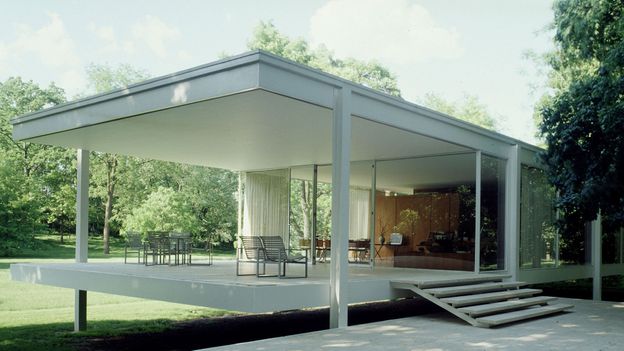
Lutheranism, another branch of early Protestantism, was adopted in Finland (then part of Sweden) and its influence later dovetailed with the purity of form espoused by modernism. According to Teemu Kiiski, CEO of Finnish Design Shop, which sells design from Nordic countries: “The Lutheran tradition affected the development of the Finnish minimalist aesthetic. Its asceticism in architecture and interiors and its endeavour to abolish all frills had the same agenda as modernism. Its ideals led early modernist Finnish designers to seek out minimalistic solutions [and this led] modernist designers to study the simple furniture and tools of Finnish folk culture.
“A scarcity of natural resources in Finland, save for wood, also informed the minimalist aesthetic of Finnish interiors and design,” Kiiski tells BBC Culture. “In the early 20th Century, designers learnt to use materials economically and innovatively, starting with Aino and Alvar Aalto’s work, epitomised by Alvar’s simple, functional Stool 60 of 1933, still an essential piece in Finnish homes.” Typical, too, of this aesthetic were the uncluttered interiors of Alvar Aalto’s Villa Mairea, which was designed in the late 1930s, and inspired by Finnish and Japanese design. An important heir to this tradition, says Kiiski, is woodworker Kari Virtanen, who collaborated with Aalto when he was very young and set up his workshop, Nikari, in 1967.
When it comes to modernism, Lancaster applauds the way functionalism stripped interiors of fussy features but, in his view, by the late 20th Century, this trend had gone too far: “Functionalism, that arose as… a praiseworthy reaction against 19th-Century architectural fancy dress, has been exalted into a dogma so that now nothing is ever left to our imagination.” However, he amusingly noted that even British fans of modernism pushed back against plain, angular interiors by domesticating them with plants and ornaments. “The cactus sprouts where once flourished the aspidistra… the little bronze from Benin grimaces where smiled the shepherdess from Dresden”.
Radically modern
Yet it was modernism that wholeheartedly and self-consciously championed minimalist, open-plan, white-walled interiors. These spaces emphasised the connection between outdoors, making rooms feel more spacious. Adolf Loos articulated early modernism’s aims with his 1908 polemical essay, Ornament and Crime, which took its main inspiration from the simplicity of vernacular architecture. Another modernist luminary, architect Ludwig Mies van der Rohe, who described his buildings as “skin and bones”, championed minimalist interiors, complemented by his radically modern, tubular steel cantilevered furniture. Van der Rohe, a director of the Bauhaus from 1930 to 1933, who emigrated to the US in 1937, lived by the motto “Less is more”.